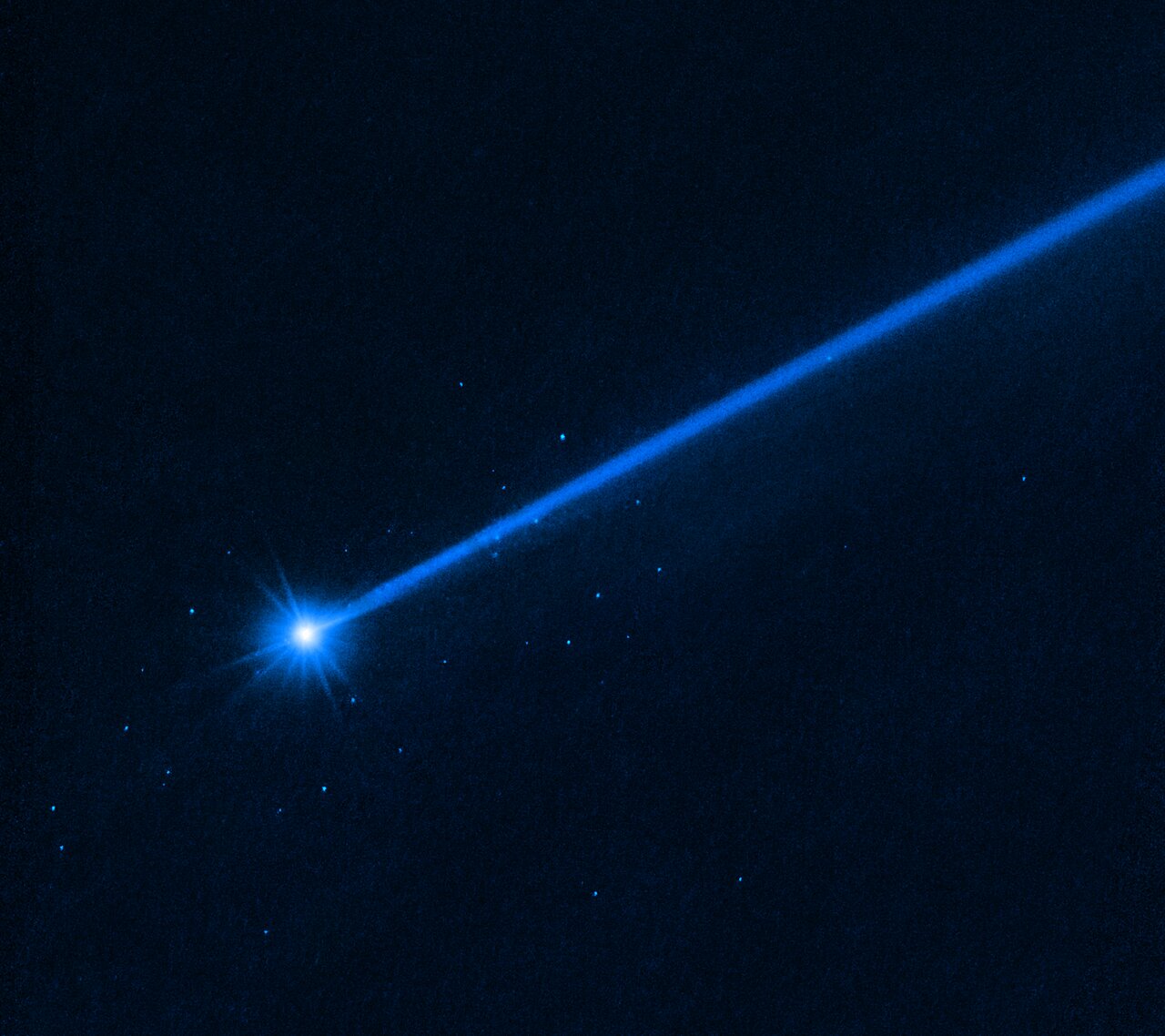When the DART (Double Asteroid Redirection Test) spacecraft intentionally slammed into asteroid moonlet Dimorphos on September 26, 2022, telescopes around the world and those in space watched as it happened, and continued to monitor the aftermath.
Of course, the Hubble Space Telescope was focused on the event. In looking at Hubble’s images and data from post-impact, astronomers discovered 37 boulders that were ejected due to the impact. These boulders range in size from 1 meter (3 feet) to 6.7 meters (22 feet).
However, these boulders were not debris created by the spacecraft’s impact. Instead, they were boulders that were already on the surface of Dimorphos, and the impact event “shook” the boulders loose. A team of astronomers, led by David Jewitt and Yoonyoung Kim say in their paper detailing the findings that these boulders are some of the faintest objects ever imaged in the Solar System, only visible because of Hubble’s keen sensitivity. The images here showing the boulders surrounding Dimorphos were taken on December 19, 2022.

Two seconds before impact, DART’s DRACO imager took and sent back an image of Dimorphos, showing a surface covered with boulders of various shapes and sizes – basically a rubble pile. The astronomers are not certain yet how the boulders were “lifted” off the asteroid’s surface. They could be part of the large ejecta plume that was observed by Hubble and several other observatories. Or another explanation is that a seismic wave from the impact could have shaken the asteroid — similar to hitting a bell with a hammer — which may have shook loose the surface rubble.

“The numbers, sizes, and shapes of the boulders imaged using HST are consistent with an origin as preexisting objects dislodged from about 2% of the surface of [Dimorphos] by the DART impact, corresponding to a circular patch 50 meters in diameter or larger,” the team wrote in their paper.
DART weighed 610 kg (1,340 lb) and it crashed into Dimorphos at approximately 22,530 km/h (14,000 mph). The impact lowered Dimorphos’ orbital speed and reduced its orbital radius. DART excavated a crater on the Dimorphos’ surface that ejected more than 900,000 kg (990 US tons) of debris into space. DART’s impact into Dimorphos also changed the trajectory of the moonlet’s parent asteroid, Didymos.
With this new data from Hubble, along with other observatories data from the impact, astronomers are fairly certain that Dimorphos is a rubble pile asteroid. These are asteroids that consist of reassembled fragments from shattered monolithic asteroids and are much more abundant than previously thought in the Solar System.
One explanation for Dimorphos’ formation is that Didymos may have spun up too quickly or could have lost material after a glancing collision with another object. The ejected material would have formed a ring that gravitationally coalesced to form Dimorphos, making it a flying rubble pile of rocky debris loosely held together by the relatively weak pull of its gravity. If this is the case, the astronomers said, the interior is probably not solid, but it would have a structure more like a bunch of grapes.
DART’s impact was a test of how asteroids respond to impacts, and the data is helping both NASA and ESA prepare for the day when we may have to redirect an asteroid away from an eventual impact with Earth.
While astronomers continue to study DART’s impact, another spacecraft will launch in 2024 to study Dimorphos even closer. ESA’s Hera mission should arrive at Didymos and Dimorphos in December 2026. Hera will undertake a detailed study of Dimorphos to understand more deeply how the impact affected it. In the team’s paper, they said that these large, slow-moving boulders are also potential targets for investigation by Hera. Hera will help turn the DART mission into data we can use to protect ourselves from future asteroid impacts.
Source: Hubble
Science Paper: The Dimorphos Boulder Swarm
Further Reading: Hubble Made a Movie of the DART Impact


So well written. I can imagine the boulder swarm we caused around this binary asteroid, and I can’t wait to see it up close when Hera visits!